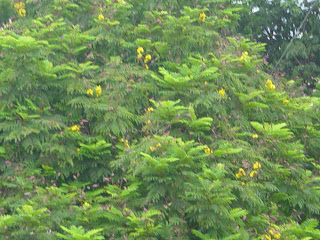Yoga and Music- Part 1
HARMONY
Just like rhythm is essential to music, life too has a natural rhythm. When all instruments in an orchestra play in synchrony, it is sweet music. When they are off‐beat and off‐tune, it becomes cacophony. Even when they are in tune, they have to work well together with full awareness to create melodious music. Similarly, when our body, mind, and spirit are not aligned, there is disharmony and stress. When all layers of our existence are perfectly aligned, we experience yoga or harmony.
What is yoga? It is not about bending our bodies in convoluted ways. It is not just stretching our muscles. It is not simply a physical exercise. Rather, Patanjali defines yoga in this manner: “Yogaschittavritti nirodah” in his famous Yoga Sutras written in the 2nd century BCE. It says that yoga is the control of the wandering mind or the stilling of the restless mind. In the Gita, yoga is defined as steadfastness in action and being balanced in success and failure. In other words, those established in yoga are not attached to outcomes but focus on the process itself.
There are many paths that lead to this state of harmony or oneness or completeness such as the yoga of devotion (bhakti), the yoga of knowledge (gyaana), and the yoga of action (karma). But the most common association of the word "yoga" is with hatha yoga. Hatha yoga is the path through which we can experience harmony in life by the union of the body, mind, and soul. Ha means the sun and tha means the moon. The sun represents heat and the moon represents coolness. Hatha yoga is therefore a combination of energizing and relaxing practices.
Another approach to experience yoga is through music. This is a sweet and easy path, isn't it? This is called the yoga of sound (naada). Great composers in the Carnatic music tradition such as Tyagaraja, Muthuswamy Dikshitar, Sadashiva Brahmendrar and Syama Sastry are not just celebrated for their musical genius but also because they were saints or naada yogis. Many of them wrote music from an inspired state of yoga. Their compositions were mostly written extemporaneously and effortlessly. Those listening to such music experience bliss and peace. They forget about their small worries, guilt and complaints, reaching the space of stillness of the mind. The purpose of all music is indeed to experience this beautiful, deep silence. This state of silence can be celebrated by composers, musicians, and listeners through the yoga of music.
For musical instruments to be in their best shape, we need to tune them regularly. When they are not practiced regularly, they get rusty and out of tune. In life, we can achieve harmony through the regular and sincere practice of yoga asanas (postures), pranayama (breathing), and meditation. Be it music or hatha yoga, when the practice is done with shraddhaa (faith or sincerity) and bhakti (devotion), we elevate it from a mere mechanical collection of notes or movements of the body/breath to a spiritual practice. Such an offering spreads harmony to our self and all those around us.
~ Peace and love to all ~



Comments
Post a Comment